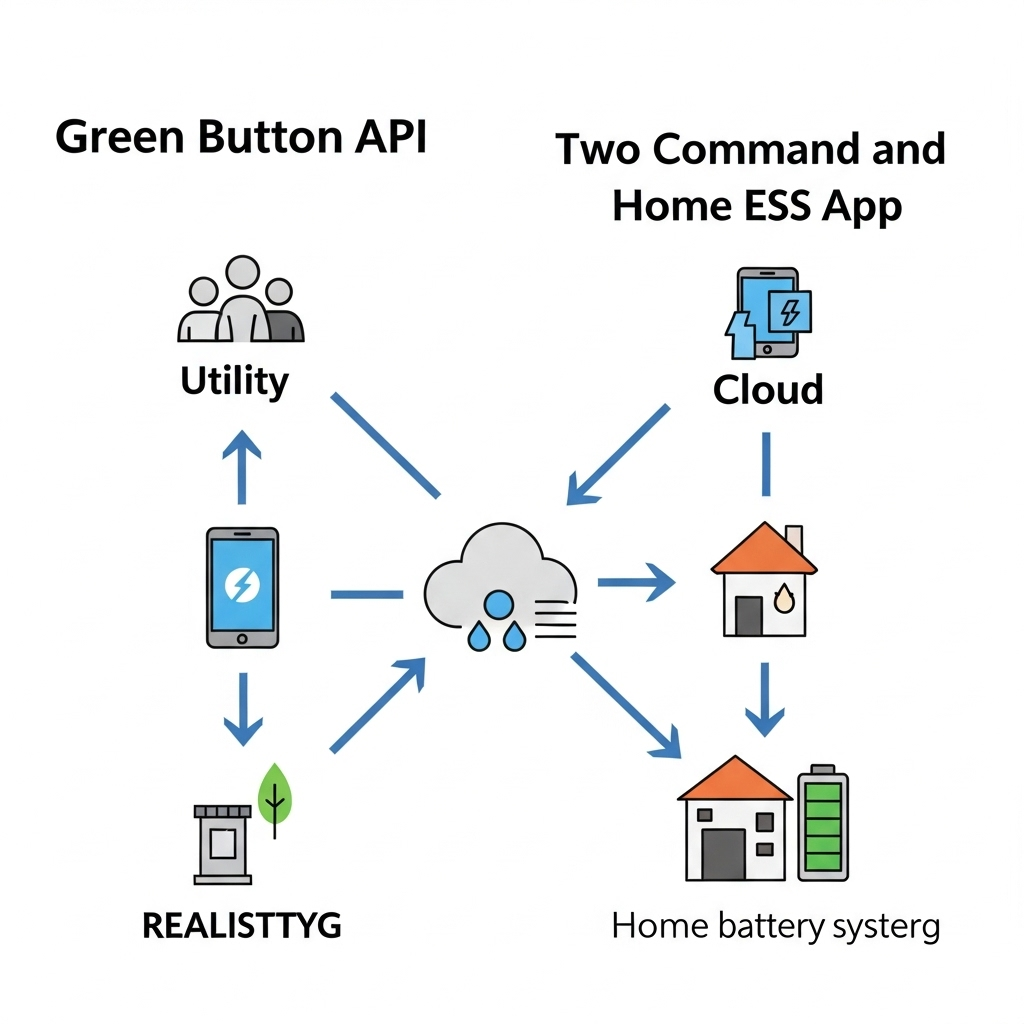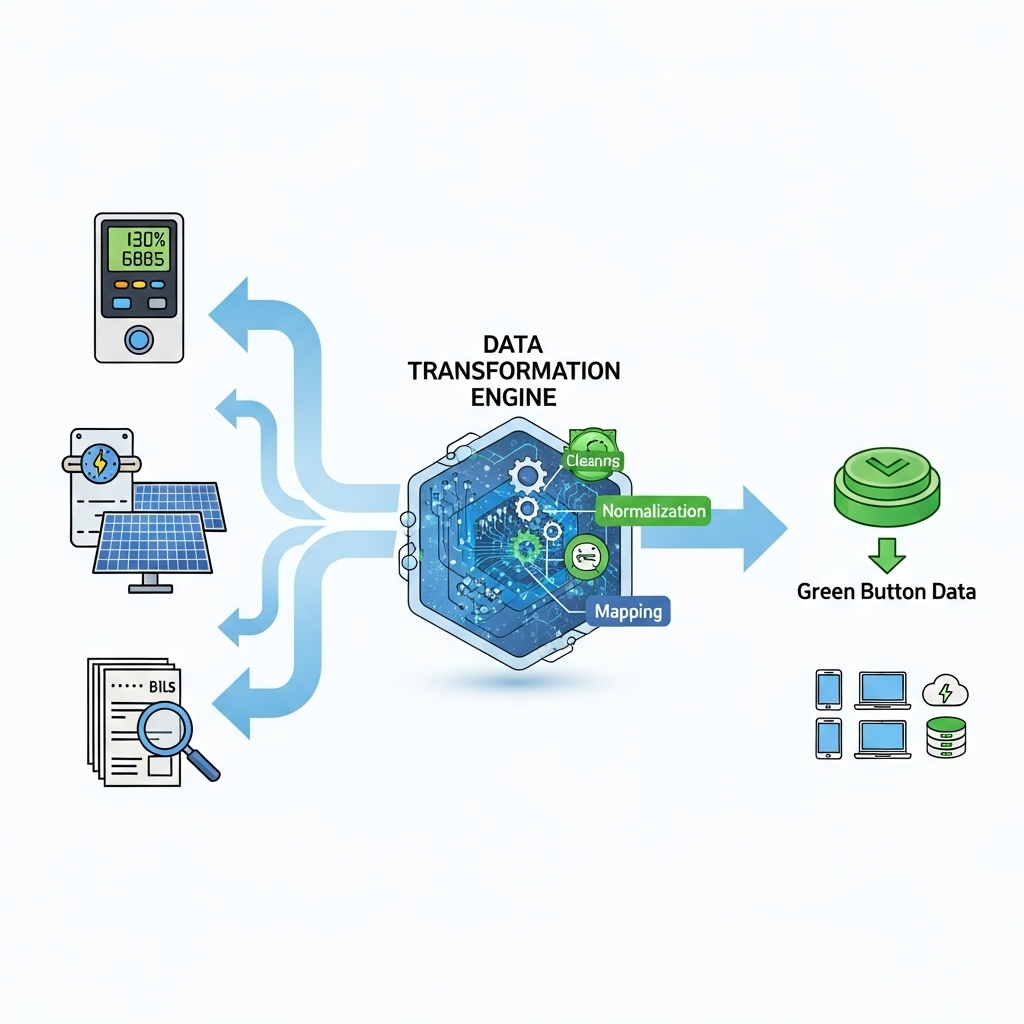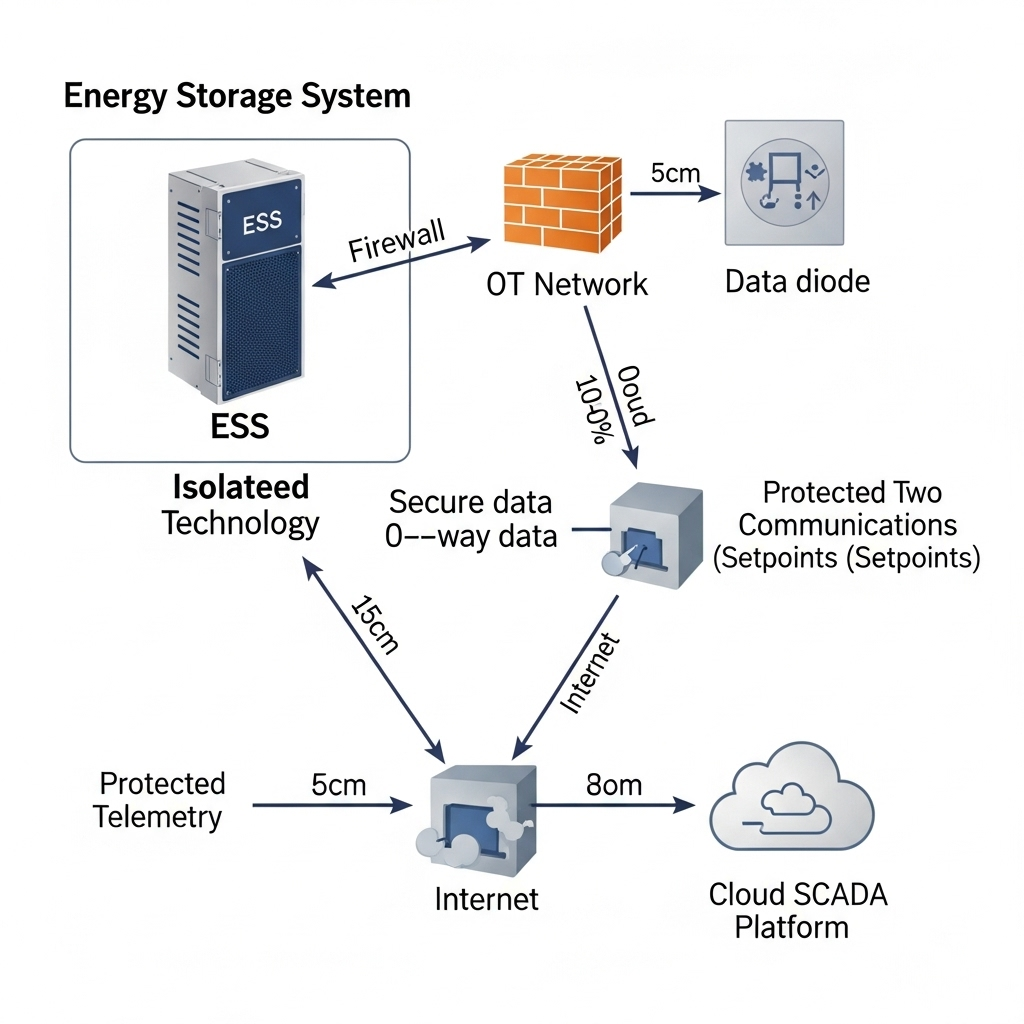Home energy storage systems (ESS) are transforming how we interact with power. They offer a path to energy independence, lower electricity bills, and reliable backup power. At the heart of managing these sophisticated systems is a mobile app. This app is your command center. Simultaneously, data standards like the Green Button initiative promise to give you unprecedented access to your energy data. This raises a critical question: Is the data from Green Button APIs sufficient to power the advanced apps needed for a modern home ESS?
Understanding the Green Button Initiative
The Green Button initiative is a response to a simple but powerful idea: you should have easy, secure access to your own energy usage information. Spearheaded by the U.S. government, this standard encourages utilities to provide energy consumption data in a common, machine-readable format. Think of it as a digital key that unlocks your household's energy history from your utility provider.
What Data Does Green Button Provide?
Primarily, Green Button delivers historical data. Through an authorized connection, an app can pull information about your past electricity consumption, often broken down by the hour, day, or billing cycle. This is incredibly useful for understanding your energy habits. You can see when you use the most power and how your consumption changes over seasons. This information is a great starting point for identifying opportunities to save energy or for correctly sizing a new solar panel and battery system.
The Strength of Standardized Data Access
The core strength of Green Button is empowerment through information. By standardizing data access, it creates a playground for developers to build applications that help you visualize and analyze your energy use. For a homeowner considering an ESS, this data can help build a compelling case, showing exactly how much a battery could save by storing cheap off-peak energy for use during expensive peak times.
The Demands of a Modern Home ESS App
Managing a home battery is far more complex than just reviewing past energy use. A true ESS app is an active control interface, not a passive data viewer. Its job is to make intelligent, real-time decisions to optimize your energy use, save you money, and ensure your home stays powered.
Beyond Basic Data: What ESS Owners Need
A capable ESS app must manage several sophisticated functions:
- Time-of-Use (TOU) Arbitrage: The app needs to know your utility's TOU schedule. It then actively commands the battery to charge from the grid when electricity is cheapest (e.g., overnight) and discharge to power your home when electricity is most expensive (e.g., late afternoon).
- Solar Self-Consumption: For homes with solar panels, the app's priority is to use as much of your own generated power as possible. It directs excess solar energy to charge the battery instead of exporting it to the grid for minimal credit.
- Storm Watch and Backup: Advanced apps monitor weather forecasts. If a major storm or grid instability is predicted, the app can automatically charge the battery to 100% to prepare for a potential outage, ensuring maximum resilience.
The Need for Two-Way Communication
These functions all depend on two-way communication. The app must not only receive data (like the battery's current state of charge) but also send commands (like 'start charging' or 'discharge now'). This command-and-control capability is the fundamental difference between a data-viewing tool and a system management tool. Green Button is designed for the former, while a dedicated ESS app is built for the latter. As noted in the IEA report, The Power of Transformation, such active demand-side response is crucial for creating a more flexible and efficient energy grid.
The Gap Between Green Button Data and ESS Control
The distinction between data access and system control is where the limitations of relying solely on Green Button become clear. It's a valuable piece of the puzzle, but it's not the whole picture.
Limitations of a Read-Only Standard
Green Button is fundamentally a 'look-back' standard. The data is historical and often delayed. It might tell you that you used 5 kWh yesterday afternoon, but it can't tell your battery to discharge 3 kW right now to avoid pulling from the grid. This lack of real-time, actionable capability makes it unsuitable as the primary engine for an ESS app. The table below highlights the key differences.
| Feature | Green Button API | Dedicated ESS API |
|---|---|---|
| Data Type | Historical energy consumption | Real-time system status (SoC, power flow) |
| Data Latency | Hours to days | Seconds to milliseconds |
| Communication | One-way (Read-only) | Two-way (Read and Write/Command) |
| Primary Use | Energy usage analysis, billing verification | System control, optimization, mode switching |
| Functionality | Shows what you used | Controls what you do now |
Bridging the Gap with Proprietary and Advanced APIs
To deliver a seamless and reliable experience, ESS manufacturers develop their own robust, proprietary APIs. These APIs are tailored specifically to their hardware—the inverter, the battery management system (BMS), and other components. This tight integration allows for the instantaneous communication required for effective system management. While this creates 'walled gardens', it guarantees performance and security. Furthermore, other standards like OpenADR (Open Automated Demand Response) are emerging to facilitate a different kind of two-way communication, where utilities can send signals to devices to help balance the grid.
Building a Truly Smart Home Energy Ecosystem
The optimal solution isn't about choosing one standard over another. It's about leveraging each for its intended purpose to create a comprehensive and intelligent energy management system.
The Core Role of the ESS and Its Native App
Your ESS and its native app are the brain and central nervous system of your home's energy flow. The app provides direct control and gives you visibility into the most important performance metrics. As explained in the 'Ultimate Reference to Solar Storage Performance', understanding metrics like Round-Trip Efficiency (RTE) and Depth of Discharge (DoD) is critical to evaluating your system's financial return and longevity. A high-quality native app makes this vital, real-time data accessible and easy to understand.
How Green Button Data Complements an ESS
While not a control tool, Green Button data remains highly valuable as a complementary resource. You can use it to:
- Validate Savings: Compare your utility bills before and after the ESS installation to precisely quantify your savings.
- Fine-Tune Strategy: Analyze long-term usage patterns from Green Button data to adjust your battery's operating modes for even greater efficiency.
- Gain a Holistic View: See your total home energy picture, including loads that are not connected to your battery backup panel.
The International Renewable Energy Agency (IRENA) emphasizes in its Innovation outlook: Thermal energy storage report that the successful integration of different technologies and data sources is what will unlock the full value of energy storage solutions.
A Clearer Picture for Your Energy Future
So, are Green Button APIs enough for home ESS apps? The answer is no. They are a foundational element for consumer data access but lack the real-time, command-and-control functionality that is essential for managing a dynamic energy storage system. A powerful and responsive ESS relies on the sophisticated, integrated software and dedicated app provided by its manufacturer.
Ultimately, the smartest approach combines the strengths of both. Use the manufacturer's app for moment-to-moment control and optimization, and use Green Button data for long-term analysis and savings verification. This layered strategy provides the control you need and the insights you want, putting you firmly in charge of your energy future. As the adoption of home storage accelerates, a trend noted by the IEA in its report on The Role of Critical Minerals in Clean Energy Transitions, understanding these tools becomes increasingly important for every homeowner.
Frequently Asked Questions
Can I manage my home battery with just Green Button data?
No. Green Button provides historical usage data, but it lacks the real-time communication needed to actively control your battery (charge, discharge, etc.). You need the app and system provided by your ESS manufacturer for that.
What is the main difference between Green Button and OpenADR?
Green Button is a one-way street for data access, allowing you to see your past energy use. OpenADR is a two-way street for communication, allowing utilities and grid operators to send signals to your devices to adjust energy use automatically, often in exchange for incentives.
Why do ESS manufacturers use their own APIs instead of a universal standard?
Manufacturers use proprietary APIs to ensure reliability, security, and access to the unique features of their hardware. This allows for deep integration between the battery, inverter, and software, providing a seamless user experience and real-time control that a general standard might not offer.
Is my energy data secure with Green Button?
The Green Button initiative is built on security protocols to ensure that only the customer and authorized third-party applications can access the data. You must explicitly grant permission for any app to connect to your utility data via Green Button.





Leave a comment
All comments are moderated before being published.
This site is protected by hCaptcha and the hCaptcha Privacy Policy and Terms of Service apply.